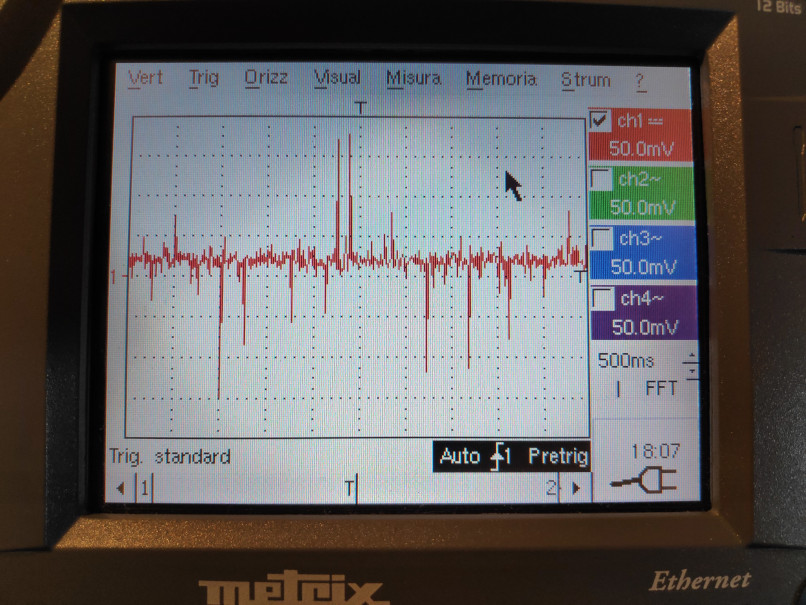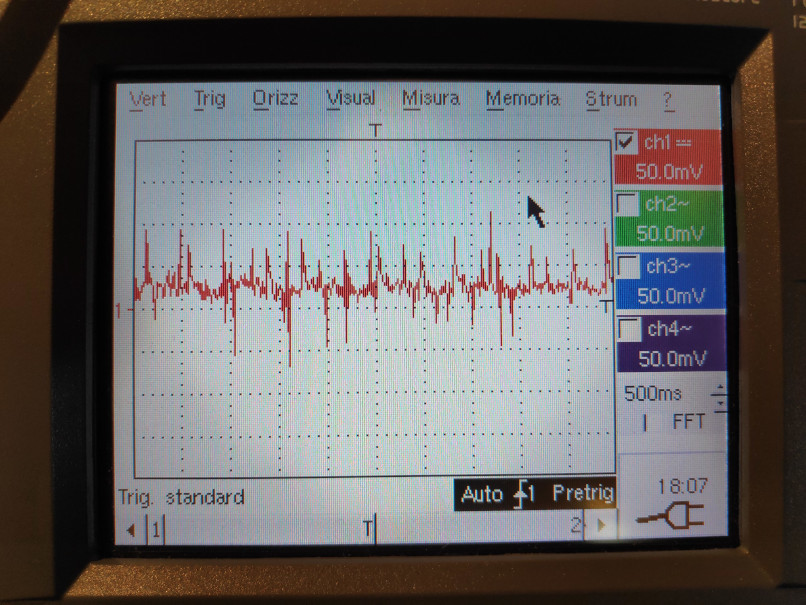Goodmorning,
I have a small voltage drop (about 20-25 mV, DC) on a sense resistor (0.180 Ohm) and I need to amplify this with an op-amp to reach 2-3 V (DC). The signal is not clean and the noise, with spikes, amplified generates oscillations making the circuit not working properly.


How can I reduce or filter the spikes and have a more linear signal?
Thanks in advance for your help.
\$\begingroup\$
\$\endgroup\$
3
-
1\$\begingroup\$ First single-trial ... sense resistor with a paralleled capacitor (something as 100nF -> 1 uF ?). Followed by R-C filter. \$\endgroup\$– Antonio51Commented May 14, 2022 at 10:26
-
\$\begingroup\$ How fast is your (useful) signal changing? Can you tolerate a huge filter wich averages e.g. 1s of the waveform? \$\endgroup\$– akwkyCommented May 14, 2022 at 21:13
-
\$\begingroup\$ This signal, after amplification, must be compared (continuously) with a V ref by LM393 comparator and in case it will be greater the source is interrupted. The spikes amplified disturbs the circuit and false trigger the comparator. A circuit that filter and averages the waveform could be a solution, but I do not know how to build it \$\endgroup\$– philfsCommented May 15, 2022 at 11:30
Add a comment
|
1 Answer
\$\begingroup\$
\$\endgroup\$
0
If you are not doing so already, you can use an instrumentation amplifier to buffer the signal from the sensor. Instrumentation amplifiers are low-noise and have a high CMRR. Also, determine the bandwidth of the signal that you wish to capture and design a corresponding low-pass filter. If the spikes are due to RFI then an RFI filter can be added as well.
